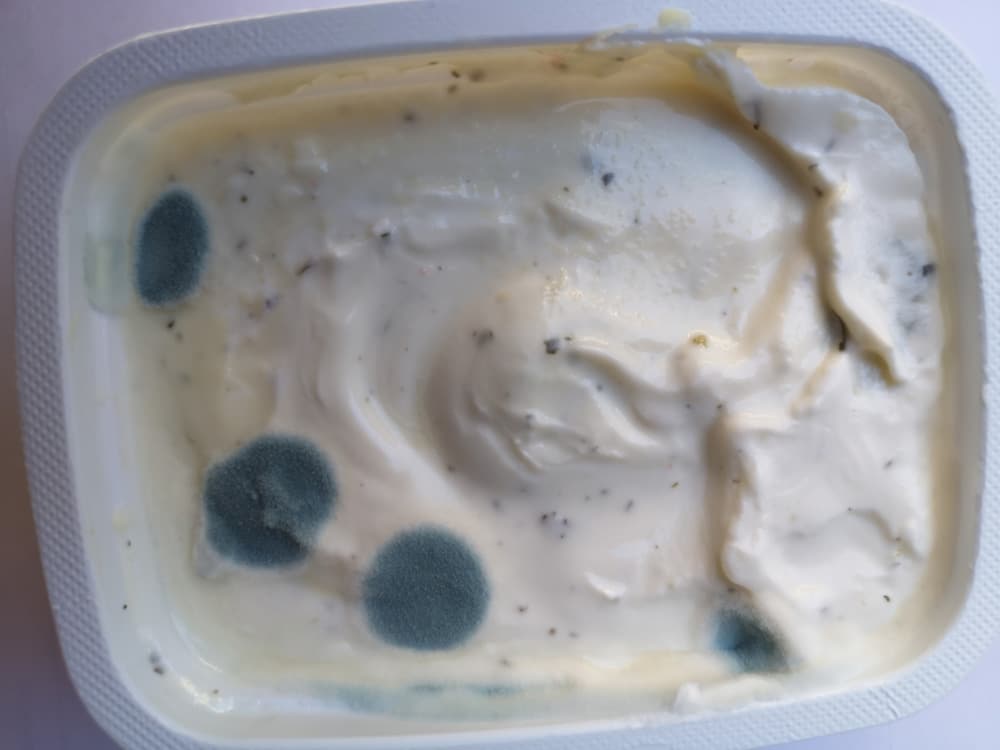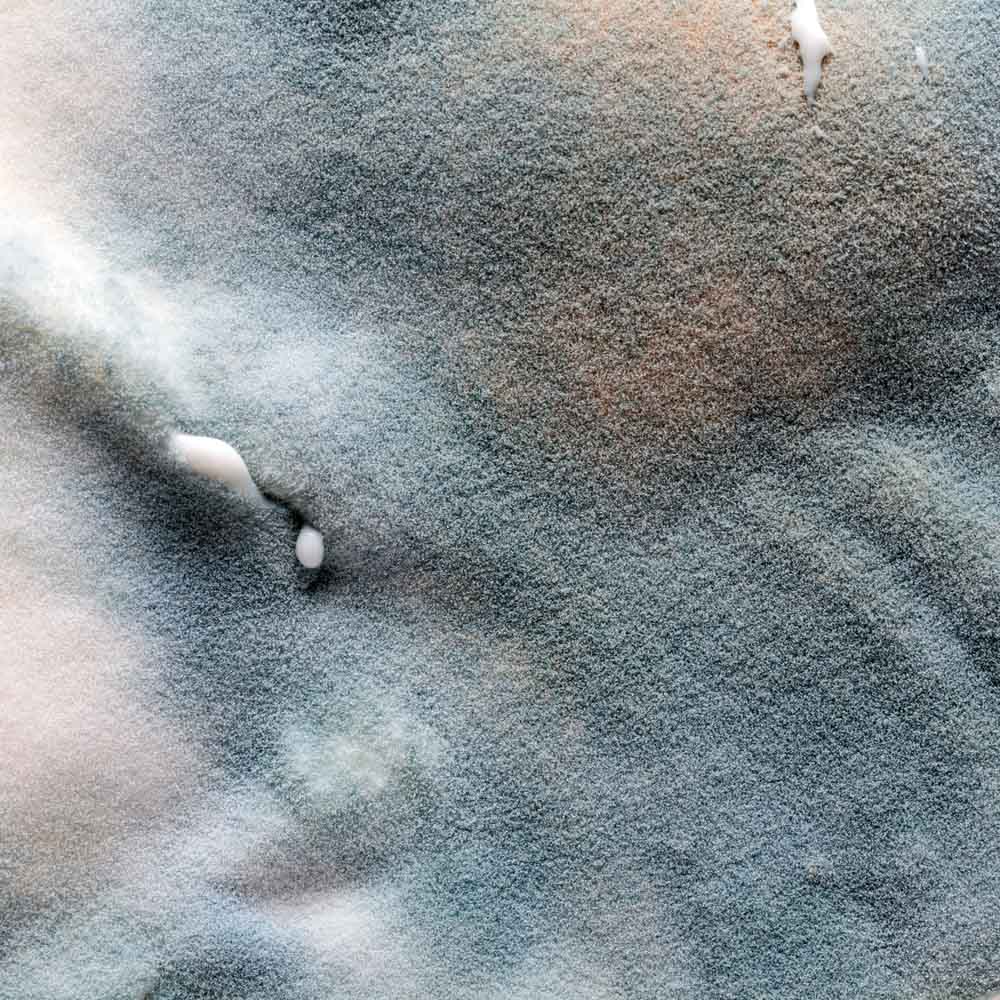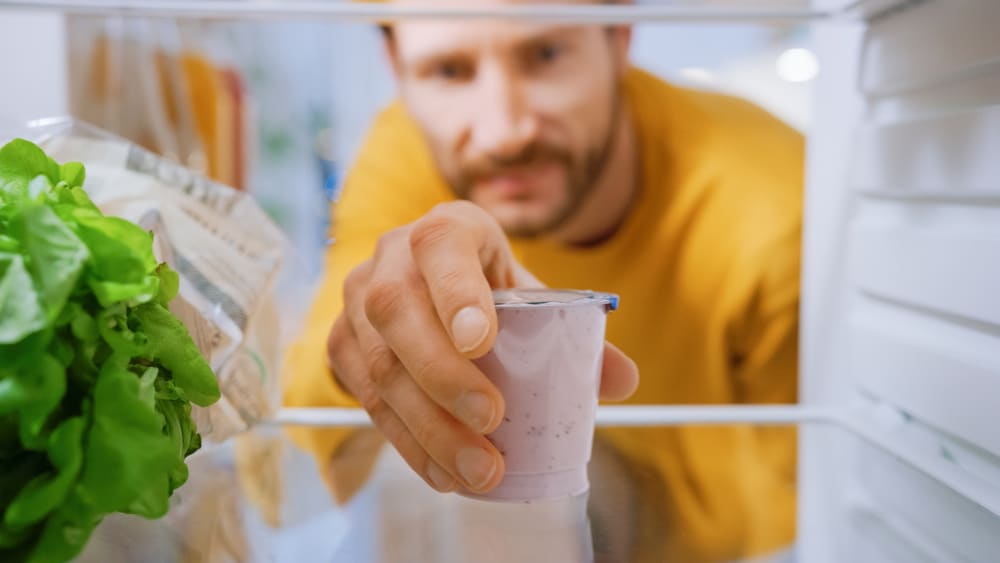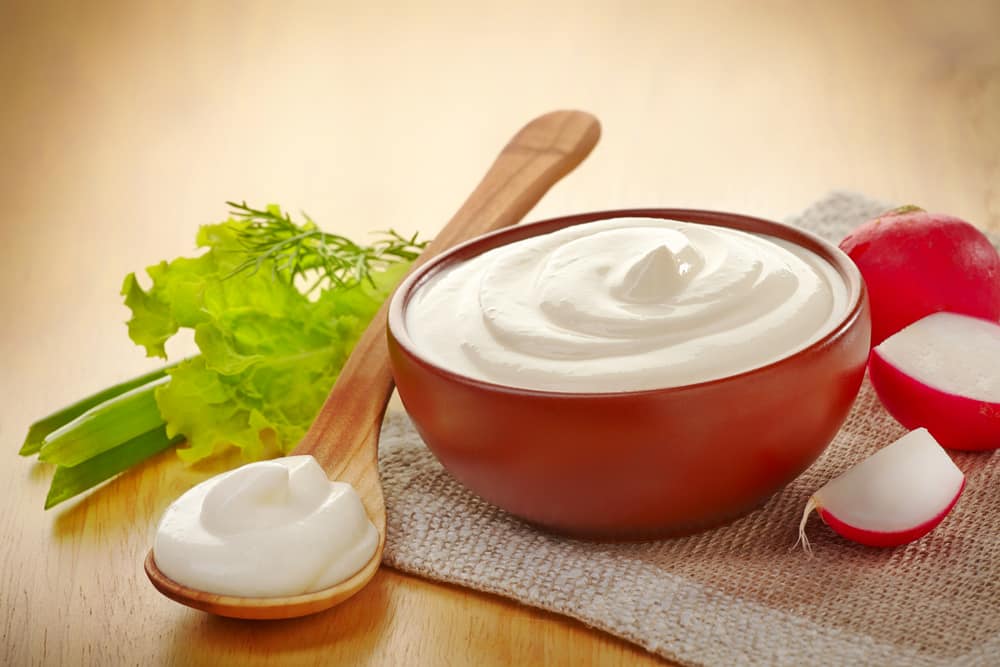
Sour cream is a well-known dairy product that’s enjoyed by many people around the globe. It’s a popular addition to a variety of foods and you can create delicious dips for chips. Sour cream has a unique flavor and can be combined with various spices to enhance its taste.
But the texture and flavor of sour cream doesn’t taste appealing when it starts to mold. In this post we discuss what could happen if you eat moldy sour cream and how to tell if cream has gone off.
What Happens if You Eat Moldy Sour Cream?
Those that are familiar with food know the health implications if they eat ingredients that have gone bad. But there are some people who don’t know what will happen if they eat food that’s gone moldy.
If that’s the case, then let this article be a guide. Mold can cause a variety of problems find out what they are in this section.
- You’re Lucky if Nothing Happens
The effects of eating moldy sour cream will depend on how strong your immune system is. There are many cases in which nothing will happen at all if you eat moldy sour cream.
At most, you’ll simply experience a bad aftertaste for a while which can be easily dealt with if you brush your teeth or eat celery.
In other cases, eating moldy sour cream might be a little worse on your stomach. You’ll start to feel nauseous and might even vomit after a few hours of having eaten the moldy sour cream. In even worse cases, food poisoning and/or other digestive issues might occur.
- Stomach Cramps
If you have a sensitive stomach you may experience lower abdominal pain. The pain may be severe or mild but shouldn’t be cause for concern. You can take pain killers or drink lots of water to flush out your system. If the pain persists then you should visit your doctor immediately.
- Fever
Some people experience high fevers after eating moldy sour cream. Mold can sometimes release toxins in the body. For your body to fight off the toxins your temperature may rise causing you to feel body aches and pains.
Your fever may break after a while but it’s important to drink lots of fluids to flush out your system and avoid dairy until the fever passes.
- Vomiting and diarrhea
If you’re sensitive to the foods you eat then you may experience vomiting or diarrhea from eating moldy sour cream.
To ease these symptoms you can drink apple juice to bind your stomach. Or you can eat apple slices until the symptoms pass. If the vomiting and diarrhea persist, contact your doctor immediately.
- Allergic Reaction
Some people are allergic to mold and this can be extremely fatal. You may experience shortness of breath, hives on the skin, a scratchy throat and high fevers.
If you are allergic to mold and suspect that the sour cream you ate contained mold, then we suggest going to the hospital immediately.
What to Do If You’ve Consumed Moldy Sour Cream
If you’re not showing any harmful symptoms then you don’t have to do anything after consuming moldy sour cream. You may still feel slightly woozy because of the thought of eating mold but you won’t be in any real danger.
However if you do start showing symptoms after eating sour cream then you can:
- Drink lots of water
- Eat high fiber foods
- Eat banana
- Take charcoal tablets
- Eat rice
- Drink plenty of apple juice
- Follow the BRAT diet (banana, rice, applesauce and toast)
- Eat saltine crackers
- Try eating low sugar oats
You may want to eat fermented foods to replace the good bacteria in your stomach. Yogurt is an excellent source of probiotics. If your symptoms aren’t going away even after eating healthier or drinking liquids then you should visit your doctor.
What To Avoid if You Have Food Poisoning from Moldy Sour Cream
If you show symptoms of food poisoning from eating moldy sour cream such as vomiting or a fever then there are foods that you should avoid:
- Dairy
- Spicey foods such as curry
- Foods that are high in fat
- Refined sugar
- Foods that cause bloating such as baked beans
You may also want to avoid certain beverages because it can irritate your stomach even more if you’ve had a bad reaction to moldy sour cream.
While it’s good to drink beverages that replace electrolytes, the CDC advises to avoid drinks such as Powerade or Gatorade. These beverages don’t replace the nutrients lost through vomiting or diarrhea.
Here is a list of other beverages you should avoid:
- Milk
- Sodas
- Caffeine, especially coffee
- Iced tea because it’s got too much sugar
Caffeinated drinks can make you more dehydrated which can make you feel worse if you’re fighting off food poisoning. It’s best to simply drink water or apple juice.
How to Tell if Sour Cream is Moldy?
There is only one way to tell whether or not the sour cream you’re trying to eat is moldy, and that’s to take a close look at it. In most cases, you should be able to identify any kind of mold or bacteria growing on it just by looking at it.
However, if that isn’t enough, try using a utensil to move it around and find any mold inside. That’ll make it all clear enough. You may find:
- Green spores
- Black fur
- Yellow spores
- Small black dots on the side of the container
Fortunately, sour cream is white so it will be easy to see if there’s mold growing on the sides of the tub or when you move the cream around. It only becomes difficult to see mold if you’ve added spices or other ingredients to your sour cream.
If you notice mold growth on your sour cream we suggest throwing it away. Don’t try to salvage the cream because it’s most likely the entire dish is contaminated. Even if parts of the sour cream seem clean, they’re unsafe to eat as well.
Additionally, if you don’t see any mold, you can tell if sour cream is off simply by tasting it. If you notice a chemical taste or if it seems extremely bitter then it means the sour cream is no longer safe to eat.
When Will Sour Cream Start Molding?
Here are a few reasons why your sour cream has mold on:
- Not refrigerated: Sour cream will start molding if you leave it outside the fridge. This is especially true if you live in a hot climate. After a few days the sour cream will start separating and spores might start to grow.
- Expired: When you buy any diary product you must first look at the expiration date on the tub. Sour cream will have an expiration date that’s at least a week or two. You may experience mold growth when the sour cream has expired.
- It’s left open: Sometimes mold is created with a combination of moisture and dirt. If you don’t keep a lid on your sour cream dirt can get inside which causes bacteria to grow. Even if your sour cream is in the fridge, always keep a lid on it to prevent contamination.
- Fridge isn’t cold enough: A fridge must be set to a specific temperature to prevent food from molding or rotting. If your fridge isn’t cold enough inside and it’s during summer your sour cream may start to grow mold.
- Other foods are added: If you’re using the sour cream as a dip, the crumbs or spices from the chips can start to mold over time. Rather use a spoon to scoop sour cream onto your chips instead of dipping the chips directly into the cream.
How to Prevent Your Sour Cream From Molding
Did you know you can preserve your sour cream for longer if you turn the tub upside down? This creates a vacuum so it becomes difficult for bacteria to access your sour cream.
By turning the container upside down you can prevent your sour cream from molding. Make sure the lid is fitted on tightly before turning the container upside down.
You can also add a splash of lemon and salt to your sour cream which acts as a natural preservative to prevent it from going bad.
But the best way to prevent sour cream from molding is by placing it in an air tight container in the fridge. You can also freeze your sour cream to preserve it for longer.
Final Thoughts
In the worst of cases, long-term and potentially even life-threatening illnesses might appear after eating moldy sour cream. The bottom line is that under no circumstance should you think about eating moldy sour cream.
There are absolutely no benefits involved and there are only needless risks. So check your sour cream first before eating it to lower the risk of consuming moldy cream.






